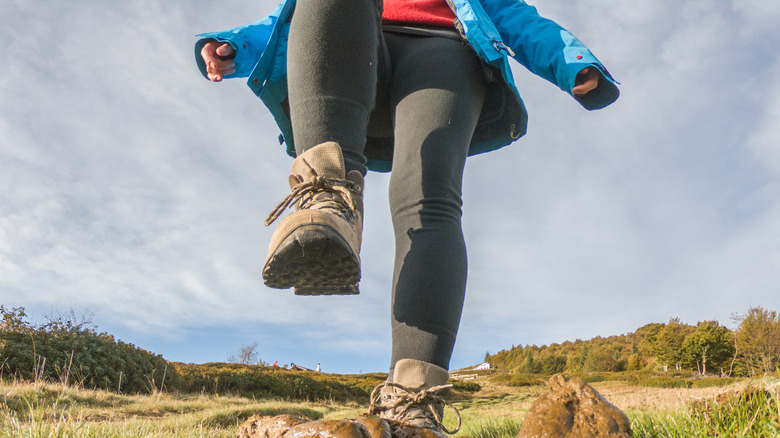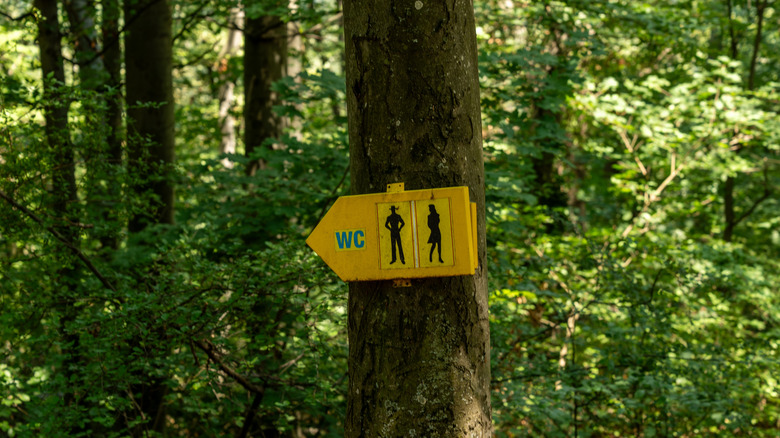Wyoming's Breathtaking Grand Teton National Park Has An Unexpected And Shockingly Gross Health Hazard
Located about a 20-minute drive from Jackson in Wyoming, the Grand Teton National Park — famous for its challenging hikes with lakes, wildflowers, and panoramas — has been facing an unprecedented challenge. According to a 2022 study (via Outside), rangers found a large amount of human excrement near Taggart Lake, a very popular location in Grand Teton National Park. During five of their routine patrols, park rangers discovered human poop and toilet paper 73 times. By fall 2024, the Environmental Protection Agency disclosed the results of their latest research, showing that a lake in Wyoming's Wind River Range was contaminated 384 times higher than the permissible swimming limit.
No one wants to step on someone else's droppings, let alone see it or smell it. But despite there being plenty of signs at trailheads informing visitors that there are no bathrooms available, people aren't taking enough steps to poop responsibly. As a result, the people running the park are also considering installing pit toilets by the lake and extra toilets along the trails. If the proposal is approved and implemented, the authorities hope this will help curb the problem.
How to leave no trace in the wild
Human feces are a community health issue. The germs found in it can remain active for over a year in the wilderness, causing intestinal issues and other diseases in visitors who may accidentally come into contact with objects or ingest food or water that's been contaminated. Melting ice and rain, for example, can cause human droppings to come into contact with streams and lakes, leading to water contamination. In a study of Grand Teton hikers conducted by Leave No Trace — an organization focused on supporting travelers about this issue — 66% of respondents reported they hadn't been adequately informed about how to go number 2 while in the wilderness.
When there's no toilet in sight and you need to go, make sure to do so at least 200 feet or 70 large steps away from water sources. Then, try to dig a small hole –commonly referred to as a cat hole – and do your business in there. If you miss your target, push it down the hole with a trowel or, worst case scenario, with your shoes. Oftentimes, you're able to dispose of toilet paper in cat holes too, as long as it's permitted by whatever park you're in (so check before you go).
If the ground's too hard for hole-digging? Well, pack your stuff in a bag and keep it with you until you find the next waste bin. Another sustainable option is packing Wag Bags, which are designed for exactly such an occasion. You can find these stationed at some national parks, or you can purchase them on Amazon.
After reading about its poop-scattered trails, hopefully you won't feel discouraged from visiting the Grand Teton National Park. Don't waste a chance to enjoy rock climbing, fishing, camping, and wildlife spotting in one of the most breathtaking national parks in the United States. Just make sure to watch your step.

